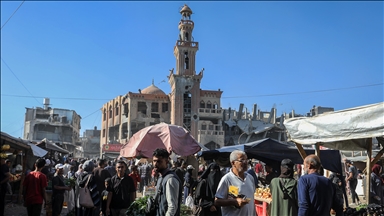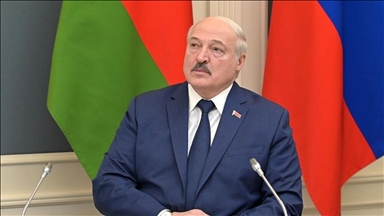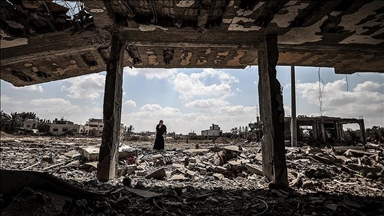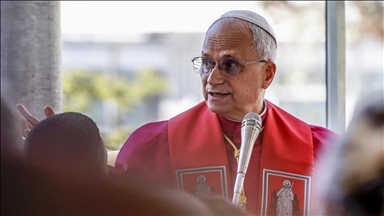UN says movement of humanitarians in Gaza improving, but aid scale-up still pending
OCHA says 190,000 metric tons of relief await entry to devastated strip
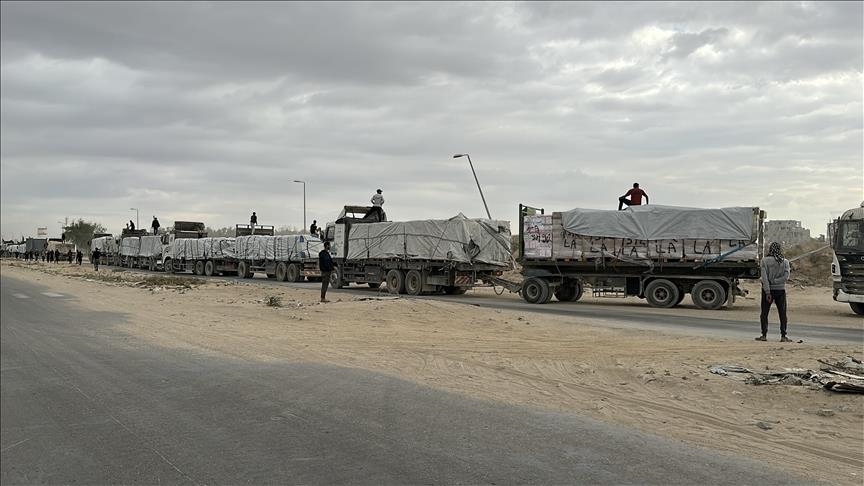
GENEVA
The humanitarian movement in Gaza has improved in recent days, with teams now able to "reach areas that were previously cut off," the UN humanitarian affairs office said on Tuesday.
Speaking at a UN briefing in Geneva, Jens Laerke, spokesperson for the Office for the Coordination of Humanitarian Affairs (OCHA), said the situation on the ground remains "very fluid," but that there are signs of progress.
“I have evidence from our colleagues on the ground who say that humanitarians are now able to move more easily in many areas,” Laerke said. "Teams are reaching people in places that have previously been cut off."
“So movement restrictions inside Gaza are clearly better now than they have been in the past,” he said, noting that teams are using the opportunity to pre-position supplies and deliver as much assistance as possible.
According to OCHA, over the weekend, 310,000 individual movements of people, mostly from southern to northern Gaza, were recorded, along with an additional 23,000 movements in other directions.
Laerke also addressed the entry of humanitarian aid, noting that while a scale-up is planned under the 20-point ceasefire plan, its implementation has not yet begun.
He added that 190,000 metric tons of aid are currently positioned across the region, including in Jordan, the West Bank, and Egypt, awaiting approval for delivery into Gaza. That figure marks an increase from the 170,000 metric tons reported previously.
Laerke said the UN remains determined to expand operations despite uncertainty over when large-scale aid deliveries will begin, emphasizing: "We need this scale-up. We won't stop until we get it."
"But it’s out of our hands when exactly it is going to happen," he added.
Needs 'remain immense'
OCHA spokesperson in Gaza, Olga Cherevko, said the UN and humanitarian partners have moved swiftly on aid delivery across Gaza since the ceasefire took effect.
"After so much horror and suffering, there is finally relief at last," Cherevko told reporters via video link at a UN briefing in New York.
She said in the past three days, thousands of tons of humanitarian aid and supplies entered Gaza, including cooking gas on Sunday "for the first time in over seven months."
Israel reported 817 trucks entered Sunday, said Cherevko.
She said the UN is working to restore clean water access, providing bread and hot meals, resupplying hospitals and field clinics, delivering fuel for bakeries and desalination plants, repairing roads and checking them for explosive risks while helping displaced families prepare for winter.
"The needs, of course, remain immense. The ceasefire has ended the fighting, but it hasn't ended the crisis," Cherevko said.
US President Donald Trump announced last week that Israel and Hamas had agreed to the first phase of a plan he laid out on Sept. 29 to bring a ceasefire to Gaza, release all Israeli captives in exchange for Palestinian prisoners, and a gradual withdrawal of Israeli forces from the entire Gaza Strip. The first phase of the deal came into force on Friday.
Earlier Monday, the release of Palestinians imprisoned in Israeli jails began after Hamas freed all 20 living Israeli captives held in the Gaza Strip.
Phase two calls for the establishment of a new governing mechanism in Gaza, the formation of a multinational force, and the disarmament of Hamas.
Since October 2023, Israeli attacks have killed over 67,800 Palestinians in the enclave, most of them women and children, and rendered it largely uninhabitable.





